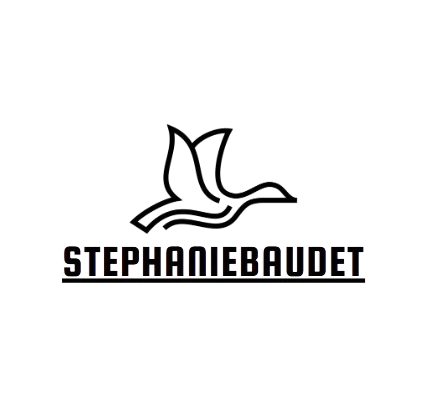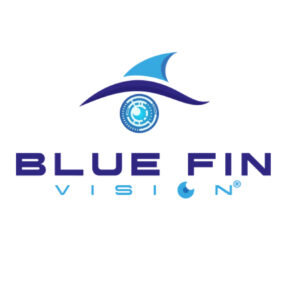Online gaming has transformed from a niche hobby to a worldwide cultural phenomenon, captivating millions of players across the globe. What began as a small, enthusiastic community has now grown into a vast, multi-billion-dollar industry. Online gaming today is more than just entertainment; it’s a platform for social interaction, professional competition, and even economic opportunities. With continuous technological advancements, online gaming continues to evolve, offering new and innovative experiences for players of all kinds.
The Evolution of Online Gaming
The history of online gaming can be traced back to the early 1990s, with the advent of the internet and multiplayer capabilities. Early games like Doom and Quake allowed players to connect via local area networks (LANs) and, later, over dial-up internet connections. These early multiplayer games laid the foundation for the explosion of online gaming that followed.
The late 1990s and early 2000s brought about the rise of massively multiplayer online role-playing games (MMORPGs) such as EverQuest and World of Warcraft. These games were revolutionary, allowing thousands of players to interact in persistent virtual worlds. MMORPGs established a sense of community and cooperation, as players teamed up to complete quests, defeat enemies, and explore vast virtual landscapes.
As internet speeds increased and technology advanced, online gaming became more accessible to the masses. By the mid-2000s, competitive online games like Counter-Strike and Call of Duty brought players together in fast-paced, skill-based environments, further cementing online gaming’s place in the entertainment industry.
The Growth of Online Multiplayer Games
By the 2010s, free-to-play games revolutionized the gaming industry. Titles like Fortnite and League of Legends allowed players to join without paying upfront, generating revenue through microtransactions such as cosmetic items, battle passes, and in-game currency. This model made online gaming more accessible than ever, attracting millions of players, including those who might not have invested in a traditional console or PC game.
Simultaneously, mobile gaming exploded in popularity. Games like Clash of Clans, Candy Crush, and PUBG Mobile enabled players to enjoy online gaming experiences on their smartphones, further expanding the gaming community. Mobile gaming, in particular, democratized gaming, allowing players of all ages and backgrounds to participate in online gaming at their convenience.
Social Interaction in Online Gaming
Beyond the thrill of gameplay, online gaming has become a vital social experience for many players. Communication tools like voice chat, text messaging, and social platforms such as Discord have turned online gaming into a global network where players can interact, collaborate, and form friendships across borders.
In many multiplayer games, cooperation is key. Titles like World of Warcraft, Overwatch, and Minecraft emphasize teamwork, with players often joining forces to complete missions, defend territory, or build intricate worlds. These collaborative aspects of gaming foster social connections and a sense of community among players.
For some, these online friendships transcend the game itself. Many https://789winws.com gamers regularly communicate with teammates or friends outside of the virtual world, through social media, live streams, and even in person. Online gaming has become an essential space for socialization, providing players with opportunities to connect with like-minded individuals, especially during times of isolation.
eSports: The Competitive Arena
While casual online gaming thrives, competitive gaming, or eSports, has emerged as a global industry. Professional gaming has grown into a spectacle, with major tournaments for games like League of Legends, Dota 2, Counter-Strike: Global Offensive, and Fortnite. These tournaments draw millions of viewers both in-person and through streaming platforms like Twitch and YouTube, with prize pools reaching millions of dollars.
The rise of eSports has not only created professional athletes but also a thriving industry around broadcasting, sponsorships, and merchandise. Gamers who excel in competitive online games can earn sponsorships, streaming income, and even brand endorsements, making eSports a viable career path. Major gaming organizations and brands now support professional players and teams, further legitimizing the competitive gaming scene.
Economic and Cultural Impact of Online Gaming
The economic impact of online gaming cannot be overstated. In 2023, the global gaming industry was valued at over $200 billion, and a significant portion of that revenue comes from online gaming. In-game purchases, downloadable content (DLC), and subscriptions to premium services contribute to the ongoing financial success of the industry. Games like Fortnite and Apex Legends generate billions through in-game transactions, while platforms like Steam and Xbox Game Pass provide access to vast libraries of online games.
Beyond finances, online gaming has become an important part of pop culture. Iconic games, characters, and streaming personalities have become cultural landmarks, influencing fashion, music, and even movies. Gaming conventions like E3 and TwitchCon attract thousands of fans, and streaming platforms have given rise to a new generation of influencers, such as Ninja, Pokimane, and PewDiePie, who have millions of followers.
Challenges and Concerns in Online Gaming
Despite its many benefits, online gaming faces several challenges. One of the most prominent concerns is gaming addiction. As games become more immersive and rewarding, some players may become overly absorbed, neglecting responsibilities and relationships. Developers and experts are working together to encourage responsible gaming practices and introduce features that help players manage their gaming habits.
Another challenge is toxic behavior in gaming communities. Online harassment, cheating, and trolling are prevalent in many multiplayer environments, creating a hostile atmosphere for some players. However, gaming companies are working to improve moderation tools and anti-cheat systems to combat these issues and foster healthier gaming experiences.
The Future of Online Gaming
The future of online gaming is full of exciting possibilities. Advancements in virtual reality (VR) and augmented reality (AR) will create even more immersive gaming experiences. Cloud gaming platforms, such as Google Stadia and Xbox Cloud Gaming, are also set to redefine how players access and enjoy games, making high-quality gaming more accessible without the need for powerful hardware.
Additionally, the concept of the metaverse—an interconnected virtual world—could transform how people socialize and interact in digital spaces. Major tech companies are investing heavily in the metaverse, and gaming will undoubtedly play a central role in its development.
Conclusion
Online gaming has grown into one of the most influential forms of entertainment worldwide. From casual mobile games to competitive eSports, online gaming has reshaped how we play, socialize, and even make a living. As the industry continues to innovate and expand, the future of online gaming looks brighter than ever.…


 Online gaming has undergone a remarkable transformation over the past few decades, evolving from a niche activity enjoyed by a small group of enthusiasts to a global cultural and entertainment powerhouse. With the advent of high-speed internet and increasingly sophisticated gaming platforms, the way people play, interact, and experience games has changed forever. Today, online gaming is more than just a pastime—it’s a multi-billion-dollar industry that connects people from all over the world, fostering communities, driving technological innovation, and creating new opportunities for players and developers alike. As online gaming continues to expand and evolve, it reshapes not only the gaming industry but also the social fabric of the digital age.
Online gaming has undergone a remarkable transformation over the past few decades, evolving from a niche activity enjoyed by a small group of enthusiasts to a global cultural and entertainment powerhouse. With the advent of high-speed internet and increasingly sophisticated gaming platforms, the way people play, interact, and experience games has changed forever. Today, online gaming is more than just a pastime—it’s a multi-billion-dollar industry that connects people from all over the world, fostering communities, driving technological innovation, and creating new opportunities for players and developers alike. As online gaming continues to expand and evolve, it reshapes not only the gaming industry but also the social fabric of the digital age. Gaming has become more than just a pastime; it has evolved into a global cultural phenomenon that transcends age, gender, and nationality. From classic board games to cutting-edge virtual reality experiences, the world of gaming has undergone a remarkable evolution, shaping entertainment, education, and social interaction in profound ways. In this article, we will explore the multifaceted nature of gaming and its impact on individuals and society.
Gaming has become more than just a pastime; it has evolved into a global cultural phenomenon that transcends age, gender, and nationality. From classic board games to cutting-edge virtual reality experiences, the world of gaming has undergone a remarkable evolution, shaping entertainment, education, and social interaction in profound ways. In this article, we will explore the multifaceted nature of gaming and its impact on individuals and society. In recent decades, the landscape of gaming has undergone a dramatic evolution, transforming from a niche hobby into a global cultural phenomenon with far-reaching impacts. From the early days of pixelated graphics to the immersive virtual reality experiences of today, gaming has captivated audiences and shaped modern society in profound ways. This article explores the transformative power of gaming and its influence on various aspects of human life.
In recent decades, the landscape of gaming has undergone a dramatic evolution, transforming from a niche hobby into a global cultural phenomenon with far-reaching impacts. From the early days of pixelated graphics to the immersive virtual reality experiences of today, gaming has captivated audiences and shaped modern society in profound ways. This article explores the transformative power of gaming and its influence on various aspects of human life. Online gaming has become a dominant force in modern entertainment, shaping how people around the world spend their leisure time. Over the past few decades, the landscape of gaming has transformed, driven by advances in technology and the increasing accessibility of the internet. What started as a hobby for a niche group of enthusiasts has now blossomed into a global phenomenon, connecting millions of players from diverse backgrounds. Today, online gaming is not just about playing games; it’s about engaging with others, forming communities, and participating in a shared digital experience that stretches beyond the confines of a physical location.
Online gaming has become a dominant force in modern entertainment, shaping how people around the world spend their leisure time. Over the past few decades, the landscape of gaming has transformed, driven by advances in technology and the increasing accessibility of the internet. What started as a hobby for a niche group of enthusiasts has now blossomed into a global phenomenon, connecting millions of players from diverse backgrounds. Today, online gaming is not just about playing games; it’s about engaging with others, forming communities, and participating in a shared digital experience that stretches beyond the confines of a physical location.






